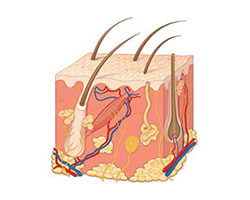
| Report Code: 40234 | Report Type: Indication Pipeline Reports | Pages: 250+ | Available format: |
| Therapeutic Area(s): | Dermatology |
Overview
Androgenetic alopecia is a genetic medical condition, which leads to pattern hair loss in both male and female. A pattern of “M” shaped is commonly seen in patients, followed by thinning of hair over the crown. Some of the major symptoms of androgenetic alopecia are bitemporal recession of hair, gradual recession of frontal hairline, increased hair fall, and thinning of the hair. The onset of this disorder is generally reported in the age of 20, and significantly affects people in the fourth decade of their life. A number of environmental and genetic factors are responsible for the disease. Improper functioning of androgen hormone, specifically dihydrotestosterone, is the most common cause of this medical condition. Moreover, unhealthy diet and excessive smoking are some other prominent reasons of androgenetic alopecia.

Risk factors associated with androgenetic alopecia includes polycystic ovary syndrome (PCOS), contraceptive pills, stress during pregnancy, and others. Blood tests, thyroid tests, biopsy, transferrin iron-binding capacity, and testosterone examination are used to diagnose androgenetic alopecia. This can be treated by surgical transplantation, medical procedures, and low-level light therapy.
A number of drug manufacturers are actively involved in the development of androgenetic alopecia therapeutics. For instance, in November 2018, Samumed LLC successfully completed dosing of first subject with SM04554 in a phase II/III trial. Similarly, in April 2018, Aclaris Therapeutics Inc. initiated a phase II open label pilot study of topical drug “ATI-502”.
Positive clinical trial results and adoption of collaboration strategies are enhancing androgenetic alopecia therapeutics pipeline. Moreover, the issuance of patents helps in achieving different milestones in the form of grants and designations from the regulatory bodies and institutes, including the U.S. Food and Drug Administration (USFDA), the European Medicines Agency (EMA), and the National Institutes of Health (NIH), among others.
Pipeline Analysis
As of March 2019, the androgenetic alopecia therapeutics pipeline comprises 15+ drugs in different stages of development.
Epidemiology Analysis
The report provides epidemiology forecast of androgenetic alopecia for seven major markets, such as the U.S., Japan, and EU5 countries (the U.K., Germany, France, Italy, and Spain). It covers prevalent population and treated patient population for the period 2016–2028. Androgenetic alopecia is a very common disorder that roughly affects 50% of men and perhaps as many women aged 40 years and above.
Competitive Landscape
Some of the key players involved in the development of androgenetic alopecia therapeutics are Samumed LLC, Cassiopea S.p.A, Aclaris Therapeutics Inc., Almirall, S.A., Kerastem Technologies LLC, Brickell Biotech Inc., and RepliCel Life Sciences.
Report Insights
Some highlights of the report, “Androgenetic Alopecia Therapeutics – Competitive Landscape, Epidemiology Forecast, and Pipeline Analysis, 2019”, include: